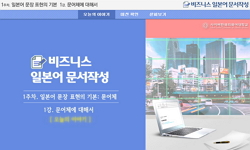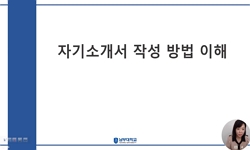The object of this thesis is to compare the motif of ‘letter’ and the visualization strategy between Iwai Shunji's novel <Love Letter> and his film <Love Letter>, Asada Giro's novel <Love Letter> and Song, Hae-Sung's film <F...
http://chineseinput.net/에서 pinyin(병음)방식으로 중국어를 변환할 수 있습니다.
변환된 중국어를 복사하여 사용하시면 됩니다.
- 中文 을 입력하시려면 zhongwen을 입력하시고 space를누르시면됩니다.
- 北京 을 입력하시려면 beijing을 입력하시고 space를 누르시면 됩니다.
https://www.riss.kr/link?id=A100202958
-
저자
구수경 (건양대학교)
- 발행기관
- 학술지명
- 권호사항
-
발행연도
2014
-
작성언어
Korean
-
주제어
편지 ; 이름 부름 ; 매체의 전환 ; 고백의 서사 ; 내면의 시각화 ; 교차편집 ; 몽타주 ; letter ; adaptation of medium ; narrative strategy ; montage ; cross cutting ; visualization the inner world ; narrative of confession
-
등재정보
KCI등재
-
자료형태
학술저널
-
수록면
107-123(17쪽)
-
KCI 피인용횟수
0
- DOI식별코드
- 제공처
-
0
상세조회 -
0
다운로드
부가정보
다국어 초록 (Multilingual Abstract)
The object of this thesis is to compare the motif of ‘letter’ and the visualization strategy between Iwai Shunji's novel <Love Letter> and his film <Love Letter>, Asada Giro's novel <Love Letter> and Song, Hae-Sung's film <Failan>. Iwai Shunji's novel <Love Letter> and his film <Love Letter> describe Hujii's story who failed her first love relationship, and Hiroco's story who can not be able to forget the passed away fiance. But the novel <Love Letter> shows how Hujii and Hiroco overcome their sorrow of parting through exchanging mailed letters on an equal footing. On the other hand, the film <Love Letter> focuses on her inner healing processes that Hujii got to know the truth of first love and affection of family. Especially, the film <Love Letter> expresses the theme well through the cinematic technique such as montage and cross cutting. Asada Giro's novel <Love Letter> and the film <Failan> are commonly searching for a woman's unconditional love which changes a man's pitiful life. But the novel <Love Letter> emphasizes a emotional effect of the letter which Failan' courteous and thankful letter draws flaring anger and blame for the violent reality from the protagonist Goro. On the other hand, the film <Failan> equally focuses on the ruined life of Lee, Gang-Jae and the ill fate of foreign worker Failan. Also it effectively expresses the love of between the two which transcends time and space through the cinematic technique such as long take, cross cutting. In conclusion, on the one hand the film <Love Letter> and <Failan> accept the storyline and the theme of the original works, but on the other they are successfully differentiated from the original through the director's new interpretation and image grammar.
목차 (Table of Contents)
- I. 들어가기
- II. 과거의 소환과 존재의 호명
- 1. 편지를 통한 과거의 소환 : 이와이 슌지의 소설 『러브 레터』
- 2. 위악적 삶을 전복시키는 고백의 서사 : 아사다 지로의 소설 「러브레터」
- III. 영화 <러브 레터>와 영화 <파이란>의 영상 미학
- I. 들어가기
- II. 과거의 소환과 존재의 호명
- 1. 편지를 통한 과거의 소환 : 이와이 슌지의 소설 『러브 레터』
- 2. 위악적 삶을 전복시키는 고백의 서사 : 아사다 지로의 소설 「러브레터」
- III. 영화 <러브 레터>와 영화 <파이란>의 영상 미학
- 1. 편지의 영상화와 몽타주의 시학 : 영화 <러브 레터>
- 2. 타락한 현실의 환기와 자기 구원 : 영화 <파이란>
- IV. 나가기
- 참고문헌
- 논문초록
참고문헌 (Reference)
1 문소영, "한국영화에 나타난 오리엘탈리즘 연구 : 영화 <파이란>을 중심으로" 16 (16): 2006
2 아사다 지로, "철도원" 문학동네 1999
3 정인영, "이와이 슌지(岩井俊二) 소설 『러브레터(ラヴレター)』와 영화
4 S. 채트먼, "이야기와 담론" 고려원 1991
5 루돌프 아른하임, "예술로서의 영화" 홍성사 1986
6 L. 쟈네티, "영화의 이해" 현암사 1995
7 로버트 리처드슨, "영화와 문학" 동문선 2000
8 조셉 보그스, "영화보기와 영화읽기" 제3문학사 1995
9 송해성, "영화 <파이란>"
10 이와이 슌지, "영화 <러브 레터>"
1 문소영, "한국영화에 나타난 오리엘탈리즘 연구 : 영화 <파이란>을 중심으로" 16 (16): 2006
2 아사다 지로, "철도원" 문학동네 1999
3 정인영, "이와이 슌지(岩井俊二) 소설 『러브레터(ラヴレター)』와 영화
4 S. 채트먼, "이야기와 담론" 고려원 1991
5 루돌프 아른하임, "예술로서의 영화" 홍성사 1986
6 L. 쟈네티, "영화의 이해" 현암사 1995
7 로버트 리처드슨, "영화와 문학" 동문선 2000
8 조셉 보그스, "영화보기와 영화읽기" 제3문학사 1995
9 송해성, "영화 <파이란>"
10 이와이 슌지, "영화 <러브 레터>"
11 볼프강 가스트, "영화" 문학과지성사 1999
12 윤정헌, "소설의 영화화 방식에 대한 대비 고찰 -「오발탄」과 「하얀 전쟁」을 중심으로-" 한국현대문예비평학회 (17) : 135-161, 2005
13 방현석, "소설의 길, 영화의 길" 실천문학사 2003
14 조정래, "소설과 영화의 서사론적 비교 연구" 한국문학연구학회 (22) : 525-560, 2004
15 김중철, "소설과 영화" 푸른사상 2000
16 김천혜, "소설 구조의 이론" 문학과지성사 1991
17 김동규, "문학과 영화이야기" 학문사 213-214, 2002
18 뱅상 아미엘, "몽타주의 미학" 동문선 2009
19 이와이 슌지, "러브 레터" 1998
동일학술지(권/호) 다른 논문
-
- 동북아시아문화학회
- 김용철
- 2014
- KCI등재
-
한국 외교부 대변인 언론 브라핑 번역 - 녹화파일, 전사본, 번역 비교를 중심으로
- 동북아시아문화학회
- 최진실
- 2014
- KCI등재
-
- 동북아시아문화학회
- Kirsten Malmkjær
- 2014
- KCI등재
-
- 동북아시아문화학회
- 남송우
- 2014
- KCI등재
분석정보
인용정보 인용지수 설명보기
학술지 이력
| 연월일 | 이력구분 | 이력상세 | 등재구분 |
|---|---|---|---|
| 2026 | 평가예정 | 재인증평가 신청대상 (재인증) | |
| 2020-01-01 | 평가 | 등재학술지 유지 (재인증) |  |
| 2017-01-01 | 평가 | 등재학술지 유지 (계속평가) |  |
| 2015-03-17 | 학회명변경 | 영문명 : 미등록 -> The Association of North-East Asian Cultures |  |
| 2013-01-01 | 평가 | 등재학술지 유지 (등재유지) |  |
| 2010-01-01 | 평가 | 등재학술지 유지 (등재유지) |  |
| 2007-01-01 | 평가 | 등재학술지 선정 (등재후보2차) |  |
| 2006-01-01 | 평가 | 등재후보학술지 유지 (계속평가) |  |
| 2004-07-01 | 평가 | 등재후보학술지 선정 (신규평가) |  |
학술지 인용정보
| 기준연도 | WOS-KCI 통합IF(2년) | KCIF(2년) | KCIF(3년) |
|---|---|---|---|
| 2016 | 0.46 | 0.46 | 0.43 |
| KCIF(4년) | KCIF(5년) | 중심성지수(3년) | 즉시성지수 |
| 0.41 | 0.37 | 0.629 | 0.09 |




 KCI
KCI eArticle
eArticle





